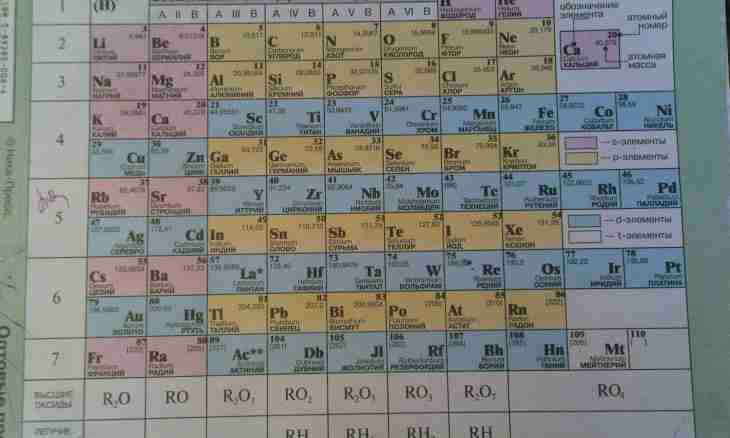Sometimes the person needs to point unmistakably to metals in Mendeleyev's Table. How can the person who is almost not owning chemistry define whether any given element is metal?
It is required to you
- - ruler;
- - pencil;
- - Mendeleyev's table.
Instruction
1. Take Mendeleyev's table, and by means of a ruler draw a line which begins in a cage with the Be element (Beryllium), and comes to an end in a cage with the At element (Astatine).
2. Those elements which will be to the left of this line – metals. And than "below and more to the left" there is an element – especially it has pronounced metal properties. It is easy to make sure that in Mendeleyev's table such metal is frantion (Fr) – the most active alkaline metal.
3. Respectively, those elements which to the right of the line, have properties of nonmetals. And here the similar rule works too: than "above and more to the right" from the line there is an element, especially it is strong nonmetal. Such element in Mendeleyev's table is fluorine (F), the strongest oxidizer. It is so active that chemists gave it valid earlier, though informal, a nickname: "Everything cracking".
4. There can be questions like "And how to be with those elements which are on the line or is very close to it?". Or, for example, ""On the right and from above" from the line there are a chrome, manganese, vanadium. Really it is nonmetals? They are used by production of steel as the alloying additives. And it is known that even small impurity of nonmetals do alloys fragile". The fact is that the elements located on the line (for example, beryllium, aluminum, titanium, germany, niobium, antimony), have amphoteric, that is dual character.
5. And as for, for example, vanadium, chrome, manganese, property of their connections depend on what oxidation level atoms of these elements have. For example, their such highest oxides as V2O5, CrO3, Mn2O7, have pronounced acid properties. For this reason they also are at seemingly "illogical" places in Mendeleyev's table. In a "clean" look these elements, certainly, are metals and have all properties of metals.

